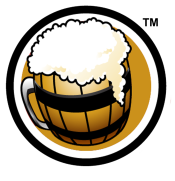Brew Log History
Ambient: {{ stats.ambient | number:0 }} °F
OG: {{ stats.ogGravity | number:3 }}
Attenuation: {{ stats.attenuation | number:2 }}%
Calories: {{ stats.calories | number:1 }} / 12oz
Carbs: {{ stats.carbs | number:1 }} g / 12oz
Readings: {{ readingsCount | number }}
{{ formatHeaderDate(dates.navStart) | date:'mediumDate' }} to {{ formatHeaderDate(dates.navEnd) | date:'mediumDate' }}
Last Updated: {{ stats.lastupdated.ago }} from {{ stats.lastupdated.source }}
Hops
|
Amount
|
Variety
|
Cost
|
Type
|
AA
|
Use
|
Time
|
IBU
|
Bill %
|
|
0.50 oz |
Simcoe0.5 oz Simcoe Hops |
|
Pellet |
12.9 |
Boil
|
60 min |
29.78 |
25% |
|
0.50 oz |
Simcoe0.5 oz Simcoe Hops |
|
Pellet |
12.9 |
Boil
|
15 min |
7.95 |
25% |
|
1 oz |
Simcoe1 oz Simcoe Hops |
|
Pellet |
12.9 |
Boil
|
5 min |
9.66 |
50% |
|
2 oz
/ $ 0.00
|
Hops Summary
|
Amount
|
Variety
|
Cost
|
IBU
|
Bill %
|
|
2 oz |
Simcoe (Pellet) 1.9999999954251 oz Simcoe (Pellet) Hops |
|
47.39 |
100% |
|
2 oz
/ $ 0.00
|
Notes
Official
NORTHERN BREWER Instructional Document
Is it a half IPA? Is it a pale ale? What’s in a name, after
all? We’re taking you back to basics with this SMASH
(single malt and single hop)-style delight. Then we’re
combining that back to basic with the latest in style-
confounding marketing-speak: American Session Ale.
SMASH is about taking things back
—
way back, to
when American pale ale was edgy and new. The thing is,
time travel is hard, and we’re thinking there’s enough
Cascade-only pale stuff out there, so we’re going to
use a decidedly new-school single hop: Simcoe. The
pine and jungle stinker herself, Simcoe is boastful and
bombastic, packing tons of hop flavor and aroma into a
neat little package.
SMASH takes a clean, dry malt base, with a low gravity for
extra drinkability, and piles on a healthy dose of delicious
hoppiness. Think of it as a way to deliver a metric hogs
-
head of hop flavor and aroma in a tidy 4.5% ABV package.
O.G: 1.044 READY: 4 WEEKS
1 week primary, 1 week secondary,
2 weeks bottle conditioning
KIT INVENTORY:
MAILLARD MALTS
TM
EXTRACTS & OTHER FERMENTABLES
-
6 lbs Pils malt syrup
BOIL ADDITIONS
-
1
/
2
oz Simcoe (60 min)
-
1
/
2
oz Simcoe (15 min)
-
1 oz Simcoe (5 min)
DRY HOPS
-
1 oz Simcoe (Dry hop 5-7 days)
YEAST
-
DRY YEAST (DEFAULT):
Danstar BRY-97 West Coast Ale
Yeast . Optimum temp: 62–72 F
-
LIQUID YEAST OPTION:
Wyeast 1272 American Ale II.
Apparent attenuation: 72-76%. Flocculation: high. Optimum
temp: 60–72° F
PRIMING SUGAR
-
5 oz Priming Sugar (save for Bottling Day)
BEFORE YOU BEGIN ...
MINIMUM REQUIREMENTS
-
Homebrewing starter kit for brewing 5 gallon batches
-
Boiling kettle of at least 3.5 gallons capacity
-
Approximately two cases of either 12 oz or 22 oz pry-off
style beer bottles
UNPACK THE KIT
-
Refrigerate the yeast upon arrival
-
Locate the Kit Inventory (above) – this is the recipe for your
beer, so keep it handy
-
Double check the box contents vs. the Kit Inventory
-
Contact us immediately if you have any
questions or concerns!
PROCEDURE
A FEW DAYS BEFORE BREWING DAY
- Remove the liquid Wyeast pack from the refrigerator,
and “smack” as shown on the back of the yeast package.
Leave it in a warm place (70–80° F) to incubate until the
pack begins to inflate. Allow at least 3 hours for inflation;
some packs may take up to several days to show infla
-
tion. Do not brew with inactive yeast
—
we can replace the
yeast, but not a batch that fails to ferment properly. If
you are using dry yeast, no action is needed.
ON BREWING DAY
- Collect and heat 2.5 gallons of water.
- Bring to a boil and add 6 lb Pilsner malt syrup.
Remove the kettle from the burner and stir in the
Pilsner malt syrup.
- Return wort to boil. The mixture is now called “wort”,
the brewer’s term for unfermented beer.
-
Add
1
/
2
oz Simcoe hops, and boil for 60 minutes.
-
Add
1
/
2
oz Simcoe hops 15 minutes before the end of the boil.
-
Add 1 oz Simcoe hops 5 minutes before the end of the boil.
- Cool the wort. When the 60-minute boil is finished,
cool the wort to approximately 100° F as rapidly as
possible. Use a wort chiller, or put the kettle in an ice
bath in your sink.
- Sanitize fermenting equipment and yeast pack. While
the wort cools, sanitize the fermenting equipment –
fermenter, lid or stopper, fermentation lock, funnel, etc –
along with the yeast pack and a pair of scissors.
- Fill primary fermenter with 2 gallons of cold water,
then pour in the cooled wort. Leave any thick sludge in
the bottom of the kettle.
- Add more cold water as needed to bring the
volume to 5 gallons.
- Aerate the wort. Seal the fermenter and rock back
and forth to splash for a few minutes, or use an aeration
system and diffusion stone.
OPTIONAL:
if you have our Mad Brewer Upgrade or
Gravity Testing kits, measure specific gravity of the wort
with a hydrometer and record.
- Add yeast once the temperature of the wort is 78°F or
lower (not warm to the touch). Use the sanitized scissors
to cut off a corner of the yeast pack, and carefully pour
the yeast into the primary fermenter.
- Seal the fermenter. Add approximately 1 tablespoon of
water to the sanitized fermentation lock. Insert the lock
into rubber stopper or lid, and seal the fermenter.
- Move the fermenter to a warm, dark, quiet spot until
fermentation begins.
SMASH AMERICAN SESSION ALE
BEYOND BREWING DAY, WEEKS 1–2
- Active fermentation begins. Within approximately 48
hours of Brewing Day, active fermentation will begin –
there will be a cap of foam on the surface of the beer,
and you may see bubbles come through the fermenta
-
tion lock. The optimum fermentation temperature for this
beer is 60–72º F – move the fermenter to a warmer or
cooler spot as needed.
- Active fermentation ends. Approximately 1 week
after brewing day, active fermentation will end: the cap
of foam falls back into the new beer, bubbling in the
fermentation lock slows down or stops.
- Rack the beer into a secondary fermenter, or simply
add the 1 oz of Simcoe hops to the fermenter. Dry hop
for 1 week total.
BOTTLING DAY—ABOUT 2 WEEKS
AFTER BREWING DAY
- Sanitize siphoning and bottling equipment.
- Mix a priming solution (a measured amount of sugar
dissolved in water to carbonate the bottled beer) of
2
/
3
cup priming sugar in 16 oz water. Bring the solution to a
boil and pour into the bottling bucket.
- Siphon beer into bottling bucket and mix with priming
solution. Stir gently to mix—don’t splash.
- Fill and cap bottles.
2 WEEKS AFTER BOTTLING DAY
- Condition bottles at room temperature for 2 weeks.
After this point, the bottles can be stored cool or cold.
- Serving. Pour into a clean glass, being careful to leave
the layer of sediment at the bottom of the bottle. Cheers!

Last Updated and Sharing

- Public: Yup, Shared
- Last Updated: 2017-11-13 18:33 UTC
For quick copying and pasting to a text based forum or email.
Click the Download as HTML file button below.
Recipe costs can be adjusted by changing the batch size. They won't be saved but will give you an idea of costs if your final yield was different.
|
Cost $ |
Cost % |
| Fermentables |
$ |
|
Steeping Grains
(Extract Only) |
$ |
|
| Hops |
$ |
|
| Yeast |
$ |
|
| Other |
$ |
|
| Cost Per Barrel |
$ 0.00 |
|
| Cost Per Pint |
$ 0.00 |
|
| Total Cost |
$ 0.00 |
|
Discussion about this recipe:



